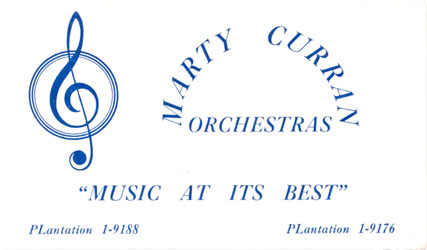![[photo of Alvin Curran]](ACurran.jpeg)
![[photo of Alvin Curran]](ACurran.jpeg)
Curran's music-making embraces all the contradictions (composed/improvised, tonal/atonal, maximal/minimal...) in a serene dialectical encounter. His more than 200 works feature taped/sampled natural sounds, piano, synthesizers, computers, violin, percussion, shofar, ship horns, accordion and chorus. Whether in the intimate form of his well-known solo performances, or pure chamber music, experimental radio works or large-scale site-specific sound environments and installations, all forge a very personal language from all the languages through dedicated research and recombinant invention.

Providence, 1952, between azalea and rhododendron
With a fortuitous bang, he begins his musical journey (1965 in Rome) as co-founder of the radical music collective MUSICA ELETTRONICA VIVA, as a solo performer, and as a composer for Rome's avantgarde theater scene. In the 70's, he creates a poetic series of solo works for synthesizer, voice, taped sounds and found objects. Seeking to develop new musical spaces, and now considered one of the leading figures in making music outside of the concert halls -- he develops a series of concerts for lakes, ports, parks, buildings, quarries and caves -- his natural laboratories. In the 1980's, he extends the ideas of musical geography by creating simultaneous radio concerts for three, then six large ensembles performing together from many European Capitals. By connecting digital samplers to MIDI Grands (Diskklavier) and computers, since 1987, he produces an enriched body of solo performance works -- an ideal synthesis between the concert hall and all sounding phenomena in the world. He creates a visually striking series of sound installations, some of them in collaboration with visual artists including Paul Klerr, Melissa Gould, Kristin Jones, Pietro Fortuna, Umberto Bignardi, Uli Sigg. Throughout these years he continues to write numerous pieces for radio and for acoustic instruments.


From 1975-80 taught vocal improvisation at the Accademia Nazionale d'Arte Drammatica (Rome) and from 1991 to 2006 was the Milhaud Professor of Composition at Mills College in Oakland, California. Currently teaching privately in Rome in addition to master classes, residencies, and lectures at Oberlin, Peabody, Brown, Berkeley, The Hague, Haifa, Harvard, Beijing, Bolzano, Mainz, Northwestern, Yale, etc.

Born December 13, 1938, Providence, Rhode Island. From five years: piano lessons, trombone, marching bands, Synagogue chants, Jazz, and his father's dance bands. Becomes an artist at age 13 in an apple tree at the house of his lifelong friend, poet Clark Coolidge. Hears Spike Jones, the Rhode Island Philharmonic, Satchmo, The Boston Symphony Orcherstra, Art Tatum, Charlie Parker, The Band of America, Thelonius Monk, Gerry Mulligan, Miles Davis, Coltrane, Bartok and Christian Wolff.
Studies composition with Ron Nelson (B.A. Brown University 1960) and with Elliott Carter and Mel Powell ( M.Mus., Yale School of Music 1963). During summer vacations, plays European crossings with the "Brunotes" on the Holland American Line, in a Greek Dance Band in the Catskills, and in the Dunes Hotel in Las Vegas.


Continues studies and friendship with Carter in Berlin (1964 Ford Foundation Grant), meets Stravinsky, Xenakis, Berio, Yuji Takahashi, Andriessen, Remo Remotti, and above all Rzewski. Goes to Darmstadt, hangs with Babbitt and Earl Brown, hears Stockhausen and Ligeti. Goes to Rome with Joel Chadabe and plays piano in bars on via Veneto, meets Franco Evangelisti and Cornelius Cardew.
In the MUSICA ELETTRONICA VIVA years (1966 -1971 in Rome), performs in over 200 concerts in Europe and the USA with Teitelbaum and Rzewski, Carol Plantamura, Ivan Vandor, Alan Bryant and Jon Phetteplace; and makes significant artistic encounters with Giuseppe Chiari, Edith Schloss, AMM, Cornelius Cardew, Steve Lacy, Michelangelo Pistoletto, Steve ben Israel, Anthony Braxton, Simone Forti, Steve Reich, Joan La Barbara, Michael Nyman, La Monte Young, Trisha Brown, Robert Ashley, David Behrman, Gordon Mumma, Alvin Lucier, Larry Austin, Bill Smith, Paul Ketoff, Robert Moog, Nuova Consonanza, MEV2, Meme Perlini, Mario Ricci, Maria Monti, Prima Materia, Ron Bunzl, Phil Glass, Charlemagne Palestine, Terry Riley, George Lewis, Evan Parker, Gregory Reeves, Serge Tcherepnin, Kosugi, Pulsa, Maryanne Amacher, John Cage, David Tudor, Morton Feldman. Scelsi becomes his friend and mentor.


Bearns Prize, BMI award 1963, National Endowment for the Arts (twice), DAAD (Berlin residencies 1963-4 and 1986-7), Logos Award 1975, WDR Ars Acustica International 1988 ("For Julian"), Prix Italia 1985 (Gian Franco Zaffrani Prize, for "1985 - A Piece for Peace"), the city of Pisa Premio Novecento, Fromm Foundation (Harvard University), Hass Family Award (San Francisco), Meet the Composer (assistance to many concerts), Leonardo Award for Excellence 1995, interviewed by the Yale Oral History American Music project (category: "Major Figures in American Music"), Guggenheim Foundation 2004, Ars Electronica 2004, Phonurgia Nova 2005 ("I Dreamt John Cage Yodeling in the Zurich Hauptbahnhof"), Experimental Music Studio (Freiburg residencies 2006, 2007), Johannes Gutenberg-Universität Gutenberg Fellowship (Mainz 2010-11), Elson lectureship (Harvard 2012), member of New Music USA Artists Council 2011; juror for Civitella Ranieri Fellowship, Sonic Arts award (Premio Internazionale Arti Sonore), Italy's national Art Prize in electronic music, Sounds of Silences; consultant for American Academy in Rome 2016-

|
Alte Oper Frankfurt |
Ijsbreker Café |
Centre Pompidou |
Il Laghetto di Villa Borghese |
The Kitchen |
Margaret Jenkins Dance Company |
Trisha Brown |
The Achim Freyer Ensemble "In Hora Mortis" |
The School of Hard Knocks |
The Living Theatre |
| Vita Accardi |
Georg Hajdu |